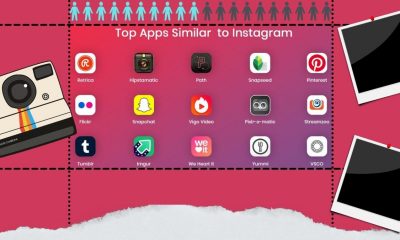Grow Your Business
How to Deal with Underperforming Remote Employees
The future of work is not a place. It’s a thing you do.
Robert Safian, Fast Company magazine editor
More and more people around the world in many different industries started working from home during the pandemic and that number is only expected to increase in the coming years. Studies show that, as a whole, workers have become more productive and the reduced footprint of the company’s job site saves additional money over time.
Work From Home Success Not Guaranteed
However, not every employee will be able to make the adjustment as successfully as others. Some may find themselves distracted by family members, Facebook, Twitter television, or any other number of causes. Others are able to maintain focus but may struggle in other areas, which can also reduce their work output.
As many managers learn in their careers, a team is only as strong as its weakest link. Underperforming remote employees might not be doing well through no fault of their own, but steps must still be taken to try and help them. Here are a few ideas on how to deal with underperforming remote employees.
Good Communication is Key
First, as is always the case in business, communication is key. A good first step is to reach out to the employee and let them know that they aren’t performing up to expectations and that you would like to help them get back on track. If you’re sending an email, you’ll want to check out a list of best email practices to avoid any embarrassing miscues.
No matter how you communicate with them, it’s important to make sure the employee doesn’t feel as though they’re being “picked on” or unfairly targeted. Studies have shown that employees tend to be happier when they have a good relationship with their manager and many find it more important than the size of their paycheck. As the saying goes, it’s better to offer the carrot, rather than the stick.
Are Your Goals Specific Enough?
Another thing to consider is to review the list of goals you’ve set for the employee. Are they specific enough that they understand what they need to accomplish every day? A goal like “increase production” is rather general and may not be helpful. A better way to phrase it might be something like “increase daily production by 30%,” so the employee is sure to understand what exactly it is that you’d like them to do.
One of the major keys to success for remote workers is maintaining focus and avoiding distraction. According to a survey by Citrix, 43% of respondents who work from home admitted they had watched television or movies on the clock, 20% said they’d played video games, and 26% confessed they had taken at least one nap during working hours.
Monitoring Employees’ Computer Usage
Employers may also want to use employee monitoring software on work devices, which will not only provide the company with insights as to how an underperforming employee is using their time, but will also act as a deterrent. An employee who knows they’re being monitored is less likely to, for example, spend 10 minutes drafting the perfect hilarious Tweet while on the clock. There is no universal solution to underperforming employees, but this is probably as close as possible.
Managing workers remotely can be difficult, especially with the increase of employees working from out-of-state, many of whom may only visit the office as little as once a month. It’s vital that these employees feel like they’re part of the team, even though they are geographically far away. An employee who feels like they’re connected will be happier and therefore more motivated at work than an employee who doesn’t.
The Goldilocks Zone for Checking In
It’s also very important to find the right balance when reaching out to an employee on a regular basis to make sure they’re on task, as workers don’t want to feel like they’re being micromanaged by their bosses. On the other hand, an employee who lives 500 miles away and only hears from his direct supervisor once a week will likely have no problems with going to the store to buy groceries at 2 PM.
Managing employees, either remotely or not, can be very difficult at times, but it can also be very rewarding. The main thing to keep in mind is that the employee on the other side of the email or phone call is a human being, a fact that can often be lost in the heat of the moment. Most “problem employees” don’t mean to be that way and with guidance and time, can often become productive members of the team.
Summary and Conclusion
These are just a few of the best practices to use when dealing with underperforming employees, but the most important thing is that the solution must be tailored to the specific issues of the employee. If the employee simply doesn’t understand the assignment, more training can be given. If they have issues surrounding focus or too many distractions in their home working environment, all the training in the world won’t help.
It’s not possible to get 100% productivity from 100% of the team 100% of the time, but with these strategies, the amount of work completed by the underperforming employee and therefore the team has a good chance of increasing and making the company even more successful than ever.
-

 Marketing Tips2 days ago
Marketing Tips2 days agoWhat is my Instagram URL? How to Find & Copy Address [Guide on Desktop or Mobile]
-

 Business Imprint3 days ago
Business Imprint3 days agoAbout Apple Employee and Friends&Family Discount in 2024
-

 App Development3 days ago
App Development3 days agoHow to Unlist your Phone Number from GetContact
-

 News4 days ago
News4 days agoOpen-Source GPT-3/4 LLM Alternatives to Try in 2024
-

 Crawling and Scraping4 days ago
Crawling and Scraping4 days agoComparison of Open Source Web Crawlers for Data Mining and Web Scraping: Pros&Cons
-

 Grow Your Business2 days ago
Grow Your Business2 days agoBest Instagram-like Apps and their Features
-

 Grow Your Business4 days ago
Grow Your Business4 days agoHow to Become a Prompt Engineer in 2024
-
Marketing Tips2 days ago
B2B Instagram Statistics in 2024






